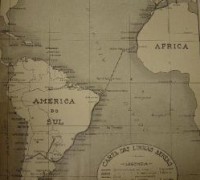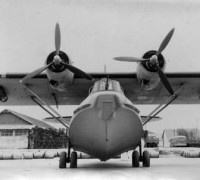THE PLAN RUBBER - U.S. PLANS FOR BRAZIL
4)PLAN RUBBER SHELVED
No US landings took place in Brazil in 1942. There was a furious level of activity on the diplomatic front that was eventually to persuade President Vargas to allow US troops into Recife, and thus rendered Plan Rubber unnecessary. In December 1941, Under-Secretary Welles persuaded Vargas to allow 150 US Marines into the airfields at Recife, Natal and Belém, disguised as aircraft mechanics. They were ordered to guarantee the safety and security of the airfields and transiting US aircraft, but were reminded that they were there under the invitation of the Brazilian authorities.This success sparked a fear that pro-Nazi elements in Brazil might stir up a backlash, but President Roosevelt resisted the urgings of some elements of his military staff to immediately execute Plan Rubber, and instead sought a diplomatic solution.
Roosevelt was quick to realize that Vargas needed to maintain the respect of his population, Vargas needed to save face, so Roosevelt's moves were slowly and carefully arranged to allow this to happen at the very time when the US staff was planning to land troops in Brazil, Roosevelt ordered the export of guns and ammunition to Brazil, which raised the level of support for the Allies amongst the Brazilian government and military.
This opened the way for a meeting of Foreign Ministers of the South American nations in January 1942, at which the US urged its neighbors to sever diplomatic relations with Germany. Increasing support for the Allied cause led to Brazil doing just that at the end of the meeting. The culmination of this careful policy was the signing in May 1942 of the Brazilian-American Defence Agreement, which allowed for full US support of the defence of Brazil, and finally (after the sinking of five Brazilian vessels by German U boats) Brazil's entry into the war on the Allied side on 22 August 1942


